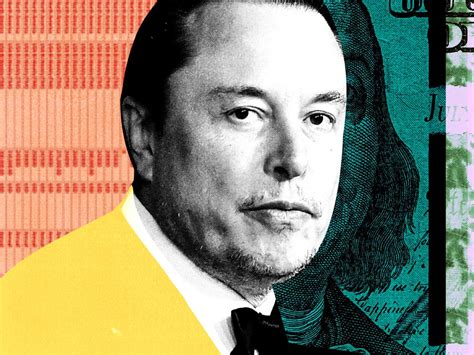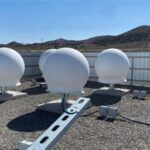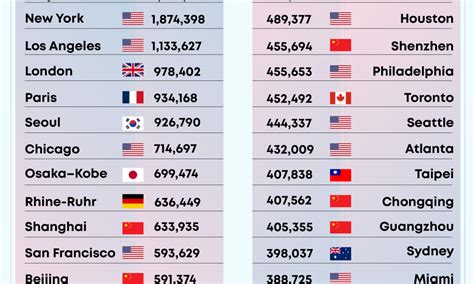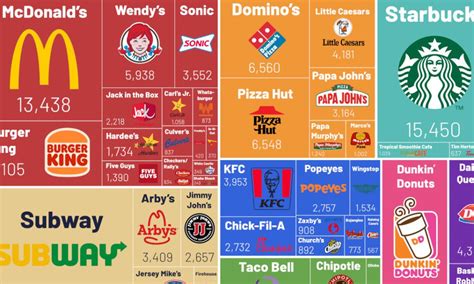
Elon Musk, despite his role as CEO, does not receive a salary from Tesla, relying instead on stock options for compensation. Tesla’s compensation structure for its employees varies significantly, with engineers and other key personnel earning competitive salaries and benefits, while production associates’ pay lags behind industry standards, according to a recent report.
Tesla’s executive pay structure is unusual, focusing on long-term incentives tied to the company’s performance rather than traditional salaries and bonuses. This model, designed to align executive interests with shareholder value, has made Musk one of the wealthiest individuals globally, contingent upon Tesla achieving ambitious milestones. However, the compensation for other employees, particularly those in production roles, presents a different picture.
Executive Compensation: Stock Options and Performance Milestones
Elon Musk’s compensation package is primarily composed of stock options, a strategy implemented to directly link his financial gains to Tesla’s success. In 2018, Tesla shareholders approved a compensation plan that granted Musk options to purchase Tesla shares as the company met specific operational and financial targets. This plan, lauded by some as a visionary approach to executive compensation, allows Musk to benefit immensely if Tesla thrives, but offers no guaranteed payout if the company falters.
“Tesla’s compensation plan for Elon Musk is designed to incentivize him to focus on long-term value creation,” explained a governance expert familiar with the arrangement. “The structure ensures that his interests are closely aligned with those of the shareholders.”
Under the 2018 plan, Musk could vest tranches of stock options as Tesla achieved certain milestones, including market capitalization and revenue targets. Each tranche granted him the right to purchase Tesla shares at a significantly lower price than the market value, resulting in substantial profits when exercised. For instance, the achievement of a $100 billion market capitalization unlocked one tranche, and further milestones led to the vesting of additional options.
This performance-based compensation has been highly lucrative for Musk. As Tesla’s market capitalization soared, driven by increased production, technological advancements, and expansion into new markets, Musk’s vested options translated into billions of dollars in personal wealth. His compensation is directly tied to the company’s performance, setting a precedent for other technology companies exploring alternative executive pay models.
However, this model has faced criticism. Detractors argue that such large payouts can create excessive focus on short-term stock performance and potentially incentivize decisions that prioritize stock price over long-term sustainability and ethical practices.
“While aligning executive compensation with shareholder value is important, the magnitude of these stock option grants can be problematic,” commented a financial analyst specializing in executive compensation. “It raises questions about fairness and whether such concentrated wealth accumulation is justifiable.”
Employee Compensation: A Tiered System
While Musk’s compensation receives significant attention, the compensation structure for Tesla’s broader workforce is equally critical. Tesla employs a large and diverse workforce, ranging from highly skilled engineers and software developers to production associates working on the factory floor. The compensation for these employees varies significantly based on their roles, skills, and contributions to the company.
According to recent reports and employee reviews, Tesla’s compensation for engineers and other specialized roles is competitive with other leading technology companies. These positions often come with attractive salaries, benefits packages, and opportunities for career advancement. Tesla attracts top talent by offering challenging projects, cutting-edge technology, and the chance to work on innovative products.
“Tesla is known for pushing the boundaries of electric vehicle technology, and that attracts a lot of talented engineers,” said a recruiter specializing in the automotive industry. “They offer competitive salaries and benefits to secure the best candidates.”
However, the compensation for production associates, who are crucial to Tesla’s manufacturing operations, paints a different picture. These employees, responsible for assembling vehicles and operating machinery, often earn wages that are lower than the industry average, particularly when compared to unionized automotive plants.
Reports indicate that Tesla’s production associates face physically demanding work conditions, long hours, and high-pressure environments. While Tesla offers some benefits, such as health insurance and stock options, the overall compensation package for these employees is often perceived as inadequate given the demands of their jobs.
“The workload at Tesla is intense, and the pay isn’t always commensurate with the effort,” shared a former production associate. “It can be a challenging environment, especially for those just starting out.”
The disparity in compensation between different employee tiers raises questions about fairness and equity within the company. Critics argue that Tesla should prioritize improving the wages and working conditions for its production associates, recognizing their vital role in the company’s success.
Impact of Location and Cost of Living
Tesla’s compensation practices are also influenced by the location of its facilities and the local cost of living. Tesla’s primary manufacturing facility, located in Fremont, California, operates in a region with a high cost of living, particularly for housing. This high cost of living can offset some of the benefits of working for Tesla, especially for lower-paid employees.
Tesla has expanded its operations to other locations, including Nevada, Texas, and Germany. These locations offer varying costs of living and different labor market dynamics. Tesla’s compensation practices in these regions are tailored to the local conditions, taking into account the prevailing wages and benefits offered by other employers.
The expansion into Texas, with the construction of Gigafactory Texas, has created new employment opportunities in a region with a lower cost of living than California. This move has the potential to improve the overall affordability for some Tesla employees, although it also presents challenges related to relocation and adapting to a new environment.
Tesla’s Response and Future Plans
Tesla has acknowledged the concerns regarding employee compensation and working conditions. The company has stated its commitment to providing competitive wages and benefits, while also investing in employee training and development programs. Tesla has also emphasized its efforts to improve workplace safety and reduce the risk of injuries.
“Tesla is committed to creating a safe and positive work environment for all employees,” stated a Tesla spokesperson. “We continuously review our compensation and benefits packages to ensure they are competitive and meet the needs of our workforce.”
Tesla has implemented initiatives to improve the working conditions in its factories, including automation and ergonomic improvements. These efforts are designed to reduce the physical strain on employees and increase productivity. Tesla has also invested in programs to support employee well-being, such as on-site medical clinics and mental health resources.
Looking ahead, Tesla faces ongoing challenges in balancing its compensation practices with its ambitious growth plans. The company must continue to attract and retain top talent while also managing its costs and maintaining profitability. Tesla’s ability to address the concerns regarding employee compensation, particularly for production associates, will be crucial to its long-term success and reputation.
Unionization Efforts
The issue of employee compensation and working conditions at Tesla has also fueled unionization efforts. The United Auto Workers (UAW) and other labor organizations have sought to organize Tesla’s workforce, advocating for better wages, benefits, and job security.
Tesla has historically resisted unionization efforts, arguing that its direct relationship with employees is more effective than collective bargaining. However, the company has faced scrutiny from labor regulators and allegations of unfair labor practices.
The debate over unionization at Tesla highlights the broader tensions between employers and employees in the modern economy. As technology companies continue to grow and disrupt traditional industries, the issue of worker rights and compensation remains a critical topic. The outcome of the unionization efforts at Tesla could have significant implications for the future of labor relations in the automotive industry and beyond.
The Role of Stock Options for Non-Executive Employees
Tesla offers stock options to all its employees, including those in non-executive positions. This is a relatively unique benefit, especially in manufacturing, and it is intended to align the interests of all employees with the company’s long-term success. The idea is that if the company performs well and the stock price increases, employees will benefit financially through the appreciation of their stock options.
However, the actual value of these stock options to individual employees can vary widely. For some, particularly those who have been with the company for a long time and have accumulated a significant number of options, the potential gains can be substantial. For others, especially newer employees or those who leave the company before their options vest, the value may be limited.
Additionally, there’s an element of risk involved, as the value of the stock options is tied to the company’s stock price, which can fluctuate significantly. If the stock price declines, the value of the options decreases accordingly. Therefore, while stock options can be a valuable benefit, they are not a guaranteed source of wealth and should be considered as part of a broader compensation package.
Tesla’s Public Image and Employer Branding
Tesla’s compensation practices and employee relations also have a significant impact on its public image and employer branding. The company’s reputation as an innovative and forward-thinking technology company attracts a lot of attention, both positive and negative.
Positive perceptions of Tesla can help the company attract top talent, build customer loyalty, and enhance its brand value. However, negative perceptions, such as concerns about low wages or poor working conditions, can damage the company’s reputation and make it more difficult to recruit and retain employees.
Tesla actively manages its public image through various communication channels, including press releases, social media, and investor relations. The company strives to present a positive image of its workplace and its commitment to employee well-being. However, these efforts are often met with skepticism from critics who argue that Tesla’s actions do not always align with its words.
The challenge for Tesla is to create a work environment that is both innovative and equitable, where employees feel valued and respected. By addressing the concerns regarding employee compensation and working conditions, Tesla can strengthen its public image and solidify its position as a leading employer in the technology industry.
The Broader Context of Income Inequality
The discussions surrounding Elon Musk’s compensation and Tesla’s employee wages also tie into the broader societal issue of income inequality. The widening gap between the highest and lowest earners has become a major concern in many countries, including the United States.
Executive compensation packages, like the one awarded to Elon Musk, often draw criticism due to their sheer size and perceived disconnect from the contributions of ordinary workers. While proponents argue that such packages are necessary to incentivize top executives and drive innovation, critics contend that they exacerbate income inequality and create a sense of unfairness.
Tesla’s compensation practices, with their disparities between executive pay and production worker wages, reflect this broader trend. Addressing income inequality requires a multifaceted approach, including policies related to taxation, minimum wages, education, and worker rights.
Conclusion: A Balancing Act
Tesla’s compensation structure presents a complex and multifaceted picture. On one hand, the company’s executive compensation model, heavily reliant on stock options, has proven incredibly lucrative for Elon Musk, aligning his interests with the company’s long-term success. On the other hand, the compensation for many of its production employees appears to lag behind industry standards, raising questions about fairness and equity.
Ultimately, Tesla must strike a balance between incentivizing its leadership, attracting and retaining top technical talent, and ensuring fair compensation and working conditions for all its employees. The company’s long-term success depends not only on its technological innovations but also on its ability to create a sustainable and equitable work environment. As Tesla continues to grow and evolve, its compensation practices will remain a subject of intense scrutiny and debate. The future of Tesla’s workforce and its impact on the broader economy will depend on the choices the company makes in addressing these critical issues. The company’s commitment to transparency and its willingness to engage in constructive dialogue with employees and stakeholders will be crucial in shaping its future. The ongoing discussion surrounding Tesla’s compensation model serves as a valuable case study for other companies grappling with similar challenges in the evolving landscape of the modern economy.
Frequently Asked Questions (FAQ)
-
Does Elon Musk receive a salary from Tesla?
No, Elon Musk does not receive a salary from Tesla. His compensation is primarily based on stock options tied to the company’s performance. According to the Yahoo Finance article, this is designed to align his interests with the long-term success of Tesla.
-
How does Tesla compensate its other employees?
Tesla’s compensation for employees varies significantly based on their roles. Engineers and specialized personnel typically receive competitive salaries and benefits, while production associates’ pay may be lower compared to industry standards, particularly in unionized automotive plants. Tesla also offers stock options to all employees, regardless of their position.
-
What is the 2018 compensation plan for Elon Musk?
The 2018 compensation plan for Elon Musk is a performance-based stock option plan. Under this plan, Musk could vest tranches of stock options as Tesla achieved specific operational and financial milestones, including market capitalization and revenue targets. This plan allowed Musk to benefit immensely if Tesla thrived, but offered no guaranteed payout if the company faltered.
-
What are some criticisms of Tesla’s compensation practices?
Some criticisms of Tesla’s compensation practices include the large payouts to executives, which can create excessive focus on short-term stock performance, and the disparity in compensation between different employee tiers, particularly between executives and production associates. There are also concerns about the physically demanding work conditions and lower-than-average wages for production associates.
-
What is Tesla doing to address concerns about employee compensation and working conditions?
Tesla has stated its commitment to providing competitive wages and benefits, while also investing in employee training and development programs. The company has also emphasized its efforts to improve workplace safety and reduce the risk of injuries. Tesla has implemented initiatives to improve the working conditions in its factories, including automation and ergonomic improvements.









